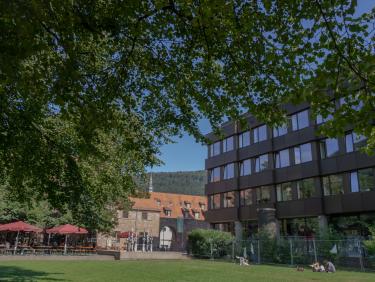
Seminar für Alte Geschichte und Epigraphik
Revision
Verschiebung der Sprechstunde von Dr. Havener
Unser Seminar
Das Seminar für Alte Geschichte und Epigraphik ist seit 1928 ein eigenständiges Seminar der Universität Heidelberg das der Forschung und Lehre in allen Bereichen der Alten Geschichte verpflichtet ist und Studierende sowie Forscherinnen und Forscher aus der ganzen Welt anzieht.

Forschung
Die Forschungstätigkeit am Seminar erstreckt sich über die gesamte Breite der Alten Geschichte von der Archaik bis in die Spätantike. Sie zeichnet sich durch innovative methodische Ansätze und eine intensive grundwissenschaftliche Arbeit, insbesondere in der lateinischen und griechischen Epigraphik sowie der Numismatik aus.
Studium
Am Seminar für Alte Geschichte und Epigraphik in Heidelberg können Sie die Geschichte der Antiken Welt in Ihrer ganzen Breite studieren. Die hier angebotene Lehre zeichnet sich durch ihre thematische Vielfalt, einen starken Fokus auf grundwissenschaftliche Fertigkeiten (Epigraphik, Numismatik, Papyrologie) und eine große Zahl von methodischen Zugängen an historische Fragestellungen aus. Mit seiner ausgezeichnet ausgestatteten Bibliothek und der Nähe zu den benachbarten Instituten der Altertumswissenschaften bietet das SAGE beste Voraussetzungen für ein erfolgreiches Studium auf höchstem Niveau.